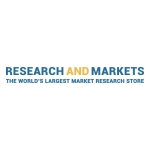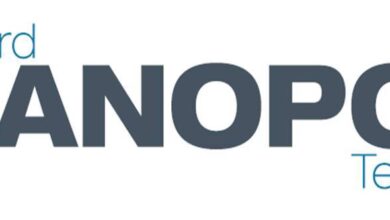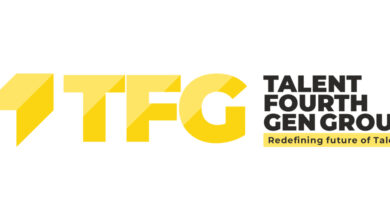Insights on the Ayurvedic Herbs Global Market to 2028 – Featuring Colgate-Palmolive, Dabur India and Emami Among Others – ResearchAndMarkets.com

DUBLIN–(BUSINESS WIRE)–The “Ayurvedic Herbs Market by Herb Type, Form, Disease Indication and Distribution Channel: Global Opportunity Analysis and Industry Forecast, 2021-2028” report has been added to ResearchAndMarkets.com’s offering.
The global Ayurvedic herbs market was valued at $9.5 billion in 2020, and is anticipated to reach $21.6 billion by 2028, growing at a CAGR of 10.8% during the forecast period.
A key factor driving the Ayurvedic herbs market is increasing popularity of natural and organic medicines and their benefits among the consumers. Factors such as rising health concerns and awareness on the side-effects of western medicines is further driving the consumer preference for Ayurvedic products. Moreover, catalyzed by economic growth and rising incomes, per capita expenditures on healthcare products have increased significantly over the past few years, creating a positive impact on the Ayurvedic herbs market. The distribution network of Ayurvedic products have improved significantly, increasing the accessibility of these products across both urban and rural regions. Lack of R&D for high yielding varieties, irregular supply of raw material, absence of a standardized procedure to manufacture Ayurvedic products, and safety regulations are major challenges faced by the market players.
Increase in knowledge about natural ingredients in health and personal care products in developed countries, namely the U.S., Canada, Australia, Singapore, and Japan, offers growth opportunity for Ayurvedic products manufacturers. Amidst the global pandemic, the fundamental priority of individuals and societies has become to stay safe and healthy. During the pandemic, the use of medicine may result in the further global adoption of alternative medicine and possibly its long-term acceptance as mainstream medicine. Ayurvedic medicine has gained a major traction in the pandemic as consumers were trying medicines in order to increase immunity of the body. Moreover, the players in the industry are also making strides in their clinical trials to find a cure for the virus. Due to the absence of allopathic treatment for COVID-19, Indians are turning toward alternative medicine. With the anxiety around the disease, people are seeking “back to roots” or “traditional” remedies, such as immunity boosters to seek comfort.
The Ayurvedic herbs market is segmented on the basis of herb type, form, disease indication, distribution channel and region. By herb type, it is categorized into Withania Somnifera (Ashwagandha), Frankincense (Boswellia), Indian Gooseberry (Triphala), Bacopa Monnieri (Brahmi), Turmeric, Cumin, Bitter Melon, Others. By form, it is bifurcated into raw, capsule/tablets and extracts. By disease indication, it is divided into cardiovascular diseases, inflammatory diseases, diabetes, infectious diseases, auto-immune diseases, skin diseases, and others. Based on distribution channel, the market is segmented into business to business and business to consumer. Region wise, it is analyzed across North America (the U.S., Canada, and Mexico), Europe (Germany, France, the UK, Italy, Spain, Russia, and rest of Europe), Asia-Pacific (China, Japan, India, Australia & New Zealand, South Korea, and rest of Asia-Pacific), and LAMEA (Brazil, South Africa, Saudi Arabia, Turkey, and rest of LAMEA).
Key Benefits
- The report provides extensive analysis of the current & emerging trends and opportunities in the Ayurvedic herbs market.
- Current and future trends are outlined in the report to determine the overall market attractiveness and single out profitable trends to gain a stronger foothold in the market.
- The report provides information regarding drivers, restraints, and opportunities with impact analysis.
- Quantitative analysis of the current market and estimation for the same from 2020 to 2028 is provided to showcase the financial competency of the market
- Porter’s five forces model of the industry demonstrates the competitiveness of the market by analyzing various parameters such as threat of new entrants, threat of substitutes, bargaining power of buyers, and bargaining power of suppliers operating in the market
- Competitive intelligence highlights the business practices followed by the leading market players across various regions
Market Dynamics
Drivers
- Rising health awareness among consumer
- Impacts of COVID-19 on the health products sector
- Development in the retail structure
Restraint
- Lack of R&D for high yielding varieties and strict regulation on Ayurvedic products
Opportunity
- Increasing demand for immune-boosting Ayurvedic medicines and supplements
Companies Mentioned
- Colgate-Palmolive Company
- Dabur India Ltd.
- Emami Limited
- Kairali Ayurvedic Group
- P&G
- Patanjali Ayurved Limited S.Ahnaz Ayurveda Pvt. Ltd
- Shree Baidyanath Ayurveda Bhawan Pvt. Ltd
- The Himalaya Drug Company
- Unilever
For more information about this report visit https://www.researchandmarkets.com/r/t58p1t
Contacts
ResearchAndMarkets.com
Laura Wood, Senior Press Manager
[email protected]
For E.S.T Office Hours Call 1-917-300-0470
For U.S./CAN Toll Free Call 1-800-526-8630
For GMT Office Hours Call +353-1-416-8900




